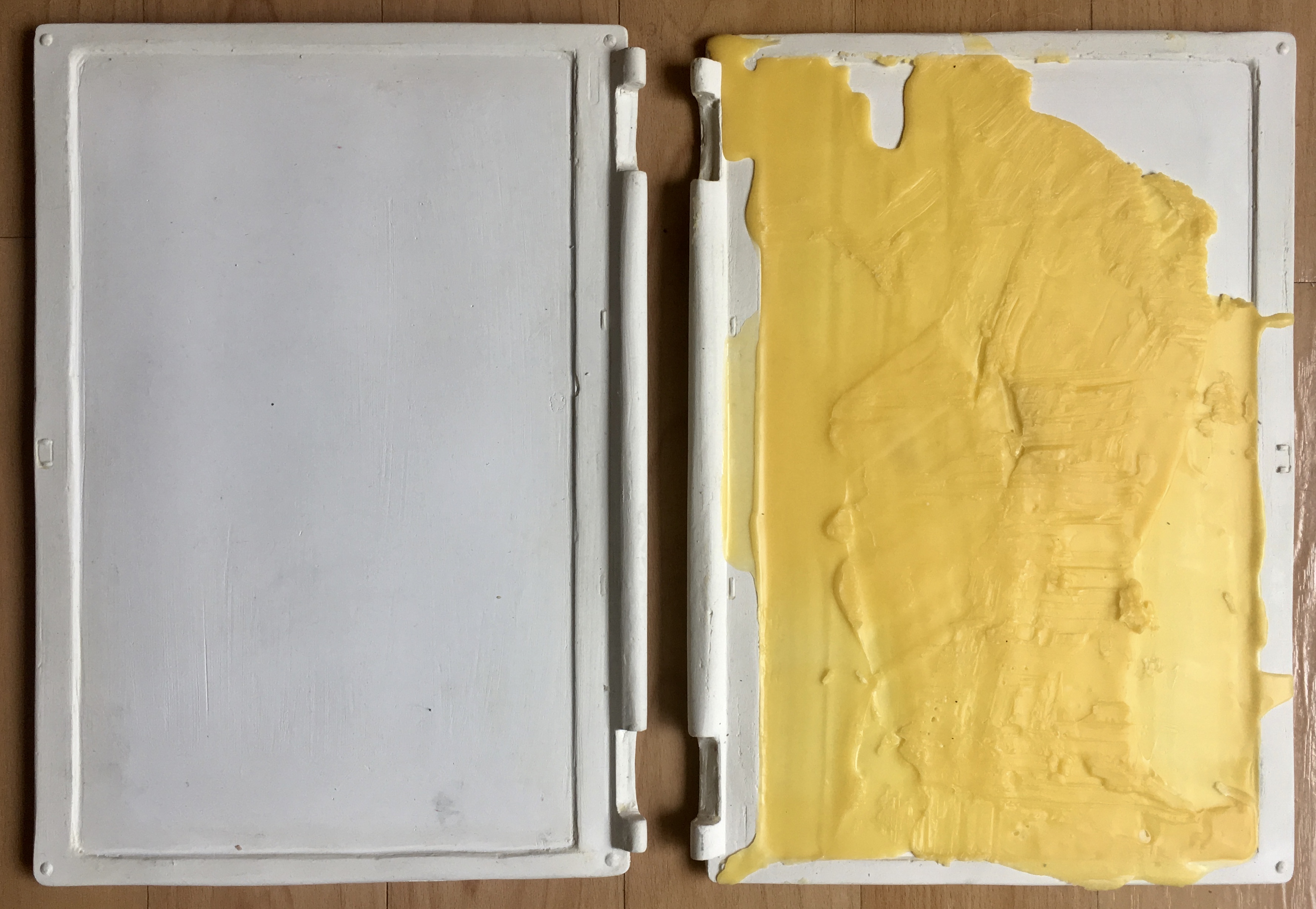This piece occurred in relation to my collection of glitched images of hands from Google Earth. As I considered the keyboard as the interface between physical reality and digital reality, I turned my attention from the digital realm of Google Earth to the physical nature of the electronics that allow that digital space to exist; by extension, I began to think about Big Data and the act of collecting data on both a mass and an individual scale. For example, the tracking of steps in Apple’s Health app, which once would have been a laborious and eccentric act, is now automatic. Furthermore, the massive scope of the data collected – such as the number of steps recorded over days, weeks, months, years, etc. – is immaterial and appears to not take up any space. In contrast, I considered the origination of the diptych; it was invented during the Roman Empire, and existed as two tablets bound together and coated with a thin layer of wax on the inside. The wax was used to record important information, and could be protected by the closing of the book-like diptych. Only later was it appropriated by the Christian religion and made into a devotional object. In this piece, I was inspired by the book-like nature of the computer – an information-recording device that can be opened and closed, much like the Roman diptych – and juxtaposed the tactile wax with the coldness of the electronic apparatus. In this iteration, I made a cast of a laptop in order for its distinct form to be closer to the ivory of Roman diptychs; however, in this piece the wax does not serve a functional purpose. The plaster casts of the laptop’s screen function as the abstract idea of a computer, devoid of electronics, while the wax obscures its features. I am not sure if this iteration is finished either.



